
Team India batsmen need to score big in Test series against England | Cricket News – Times of India
MUMBAI: While it’s always about picking 20 wickets to win a Test match, putting those many runs on the board to allow bowlers the cushion of working on those wickets is also essential.
In India’s last three Test wins in England – Nottingham (2007 & 2018) and Lord’s (2014) – runs on the board allowed bowlers to engineer victory. In 2007, Zaheer Khan got to bowl a total of 48 overs for his magnificent nine-wicket Test haul, but the five top-order batsmen got half-centuries in the first innings and India posted 481 runs.
In 2014, Bhuvneshwar Kumar and Ishant Sharma got six and seven-wicket hauls respectively in the first and second innings, but it was also thanks to Ajinkya Rahane‘s first-innings century that took India past 250. Three half-centuries and two near-half-centuries in the second innings set England a 366-run target.
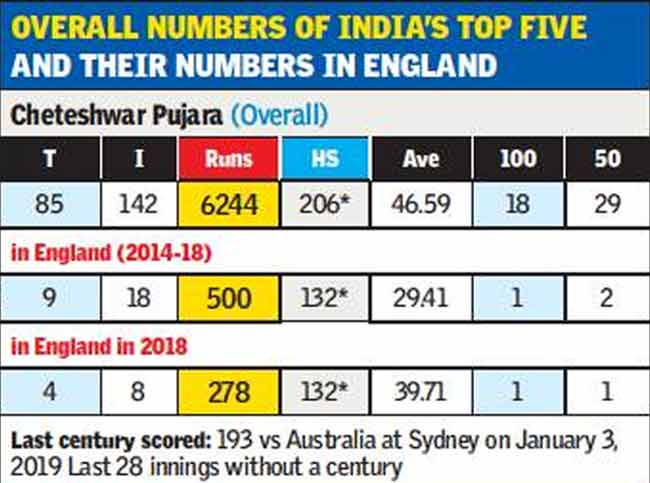
In 2018, Jasprit Bumrah took his time to bowl 29 overs and get a five-wicket haul but India took a big first innings lead while Virat Kohli‘s century in the second innings set England a massive target of 520 runs.
In 2021, starting with the World Test Championship final, Team India‘s batting order will have to go back and look at these three Test matches to remind themselves what it takes for a bowling attack to prosper and eventually win a Test match in England.
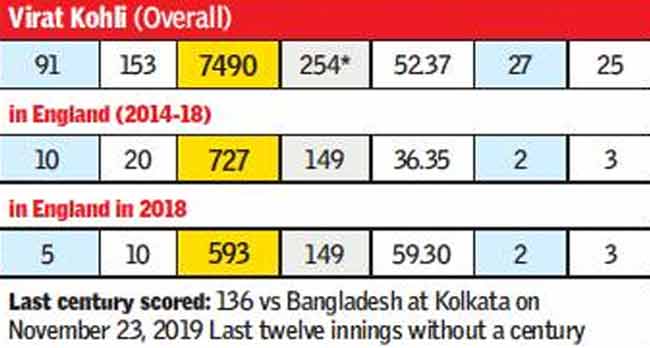
Another aspect that the team management has been thinking about is the lack of ‘big hundreds’ in recent months. Kohli last scored a Test century 13 innings ago. Shubhman Gill hasn’t recorded his first century one in 13 innings so far. Between 2018 and now, Ajinkya Rahane has three centuries in 50 Test innings – of course, including the priceless ton at the MCG in December – but none beyond 110 or the 115-run mark.
Not just the paucity of centuries but the lack of ‘big hundreds’ has kept India away from registering the kind of totals that would give the bowling attack that required ‘cushion’.
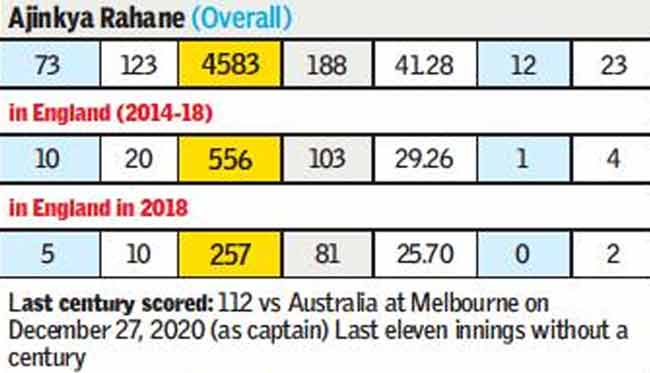
In fact, barring Rohit Sharma‘s two big knocks in 2019 against South Africa at home and the recent 161 against England in Chennai, none of the other top-order Indian batsmen have managed to go past the 150-run mark. The last time an Indian batsman posted a heavy single-inning score was 19 months ago, when Kohli’s unbeaten 254 gave India a massive innings win against South Africa in Pune.
For India to do any better than what they have managed on a tour of England in the last 14 years, this trend has to change. As soon as the batsmen hit the nets in the UK, one of the foremost challenges will be to play the moving ball and play it at the pace at which it’s delivered: a few fractions of a second quicker.
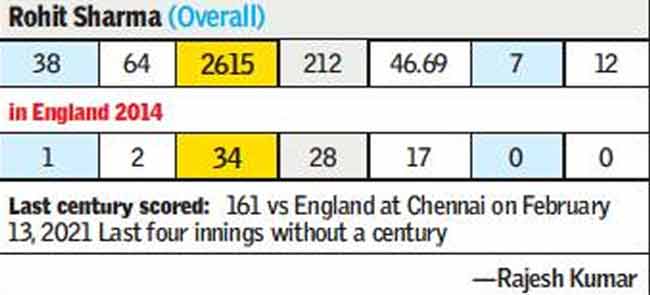
For that, the team management intends to start with a few basics – a) reducing the 22 yards to 16 while facing the robo-arm in the nets; b) getting pre-shined balls in the nets and “figuring out ways” to make the shiny side heavier; c) working on the ‘art of leaving’ – which is, making sure, not every ball is meant to be played.
Reducing the bowling length to 16 yards will mean batsmen facing quicker deliveries with lesser time at hand. That quick-second decision to either play it or let it go is a time-honoured skill in Test match batting that the team will have to adhere to.
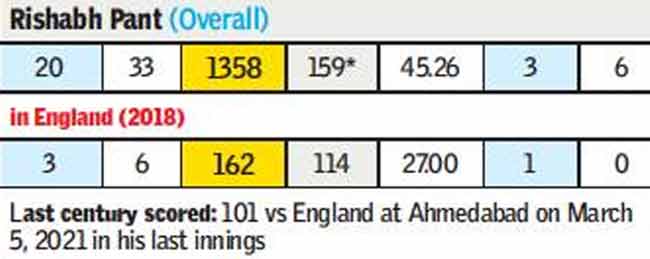
“The other thing is to understand what’s happening around you, assess the conditions, wait and bide time. Mark the bowlers and play on merit. These basic things are going to matter,” said a team source.

Stay connected with us on social media platform for instant update click here to join our Twitter, & Facebook
We are now on Telegram. Click here to join our channel (@TechiUpdate) and stay updated with the latest Technology headlines.
For all the latest Sports News Click Here
For the latest news and updates, follow us on Google News.

